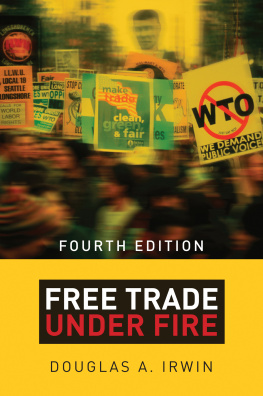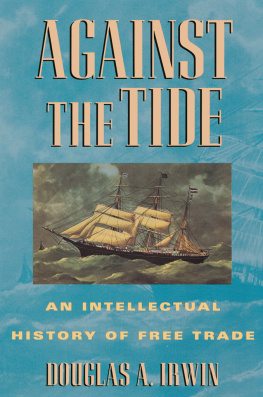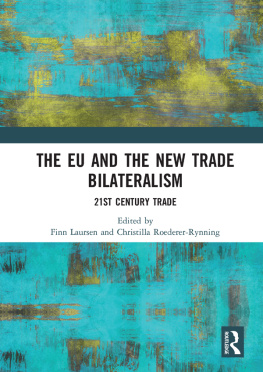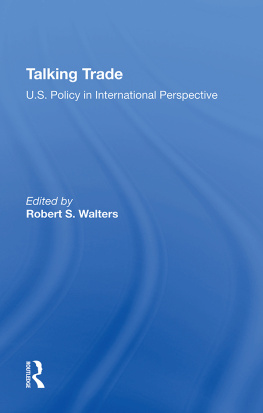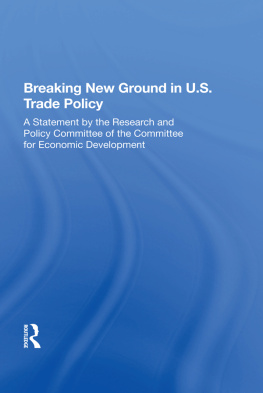Trade Policy Disaster
The Ohlin Lectures
Protectionism, Jagdish Bhagwati
Economic Stabilization and Debt in Developing Countries, Richard N. Cooper
Unemployment and Macroeconomics, Assar Lindbeck
Political Economy of Policy Reform in Developing Countries, Anne O. Krueger
Factor Proportions, Trade, and Growth, Ronald Findlay
Development, Geography, and Economic Theory, Paul Krugman
Unintended Consequences: The Impact of Factor Endowments, Culture, and Politics on Long-Run Economic Performance, Deepak Lal
Globalization and the Theory of Input Trade, Ronald W. Jones
Too Sensational: On the Choice of Exchange Rate Regimes, W. Max Corden
Globalization and the Poor Periphery before 1950, Jeffrey G. Williamson
The Development and Testing of Heckscher-Ohlin Trade Models: A Review, Robert E. Baldwin
Offshoring in the Global Economy: Microeconomic Structure and Macroeconomic Implications, Robert C. Feenstra
The Craft of Economics: Lessons from the Heckscher-Ohlin Framework, Edward E. Leamer
Trade Policy Disaster: Lessons from the 1930s, Douglas A. Irwin
See http://mitpress.mit.edu for a complete list of titles in this series.
Trade Policy Disaster
Lessons from the 1930s
Douglas A. Irwin
The MIT Press
Cambridge, Massachusetts
London, England
2012 Massachusetts Institute of Technology
All rights reserved. No part of this book may be reproduced in any form by any electronic or mechanical means (including photocopying, recording, or information storage and retrieval) without permission in writing from the publisher.
For information about special quantity discounts, please email .
This book was set in Palatino by Graphic Composition, Inc., Bogart, Georgia. Printed and bound in the United States of America.
Library of Congress Cataloging-in-Publication Data
Irwin, Douglas A., 1962
Trade policy disaster : lessons from the 1930s / Douglas A. Irwin.
p. cm. (The Ohlin lectures)
Includes bibliographical references and index.
ISBN 978-0-262-01671-1 (hardcover : alk. paper)
ISBN 978-0-262-29774-5 (retail e-book)
1. Commercial policyHistory. 2. ProtectionismHistory. 3. Free tradeHistory. 4. Foreign exchange ratesHistory. I. Title.
HF1411.I753 2012
382'.309043dc23
2011016638
10 9 8 7 6 5 4 3 2 1
d_r1
Preface
More than eighty years ago, the world experienced a deep and prolonged economic contraction that left disastrous political and social consequences in its wake. Today, the Great Depression of the 1930s remains a fascinating subject of general and scholarly interest, one that has left a permanent imprint on modern economics. As Ben Bernanke (1995, 1) once remarked,
To understand the Great Depression is the Holy Grail of macroeconomics. Not only did the Depression give birth to macroeconomics as a distinct field of study, but alsoto an extent that is not always fully appreciatedthe experience of the 1930s continues to influence macroeconomists beliefs, policy recommendations, and research agendas.
The same is true for trade policy. This period of extreme duress saw an unprecedented outbreak of protectionism. The proliferation of higher tariffs, import quotas, and foreign exchange controls all contributed to the collapse of international trade. These import restrictions, combined with preferential trade blocs, destroyed the open, nondiscriminatory world trading system. Once imposed, the trade barriers took root and proved difficult to remove, stifling world trade and hindering economic recovery for years to come. In fact, it took decades of negotiations after World War II, through the General Agreement on Tariffs and Trade (GATT), before these barriers were fully unraveled.
The trade policy experience of the 1930s continues to influence the beliefs and policy recommendations of international trade economists. The worst nightmare of every trade economist is that, in the midst of an economic crisis, policymakers might be tempted to return to the autarkic, beggar-my-neighbor protectionism of the Great Depression. Such a move, it is feared, could easily spin out of control, with countries retaliating against one another in a race to close their markets to foreign goods. Not only would this destroy trade and make the crisis even worse but, if history is any guide, it would be very difficult to reverse the policies and undo the damage.
Consequently, economists frequently warn of the dangers of protectionism and criticize the use of trade policy interventions as costly and counterproductive, often by invoking the 1930s experience as an example. But they have done so without fully understanding why policymakers felt it necessary to adopt such policies at the time. For example, economists usually attribute protectionist measures to domestic producers pressuring the government for relief from foreign competition, but this was not the main story in the 1930s. Import penetration began declining for most countries when the Great Depression hit because trade fell much faster than production. Pressures from foreign competition were easing, not intensifying, for most domestic producers, although producers were still struggling to cope with falling prices and contracting demand.
Hence, the standard explanation for the existence of trade restrictionsspecial interest politicsdoes not help us understand the trade policy developments of the 1930s very well. This is problematic. If economists lack a clear understanding of why countries so easily slid into protectionism in the past, it will be difficult to recognize situations in which protectionist policies might be enacted in the future.
This book examines the trade policy disaster of the 1930s in the hope of understanding the logic behind the policy response. Once we uncover the reasons why countries resorted to protectionism, once we recover the historical context in which policymakers were willing to sacrifice open trade for other policy objectives, we will be in a better position to draw lessons that can help us avoid making similar mistakes in the future. Such insights are all the more relevant today because of the fears that another financial crisis could produce a similar outbreak of trade-destructive policies.
The main reason why governments resorted to import restrictions in the 1930s was that they had relatively few policy instruments with which to respond to the Great Depression. Most countries were on the gold standard and could not ease domestic monetary conditions without jeopardizing the fixed gold parity; this eliminated a monetary policy response. The economic orthodoxy of the day held that governments should respond to a downturn with austerity measurescutting expenditures and raising taxesto keep the budget in balance; this ruled out a fiscal policy response. Without monetary or fiscal policy as options, governments turned to trade restrictions. These measures not only failed to promote economic recovery, they made matters worse by choking off international trade.
Yet this explanation for the protectionism of the 1930s is also incomplete. A closer look at the period reveals that not all countries adopted protectionist policies to the same degree. The key to understanding which countries imposed the most protectionist measures, it turns out, is their exchange rate policy. When the Great Depression began, most countries had fixed exchange rates under the gold standard. The onset of deflation and the loss of gold reserves was the initial shock that triggered a policy response. Countries had very few ways of adjusting to this adverse development: wage and price deflation, exchange rate depreciation, or import restrictions and foreign exchange controls. Policymakers initially believed that wage and price deflation would restore equilibrium, but they gradually learned that it was failing to do so and, even worse, that it was only intensifying the contraction.
Next page

